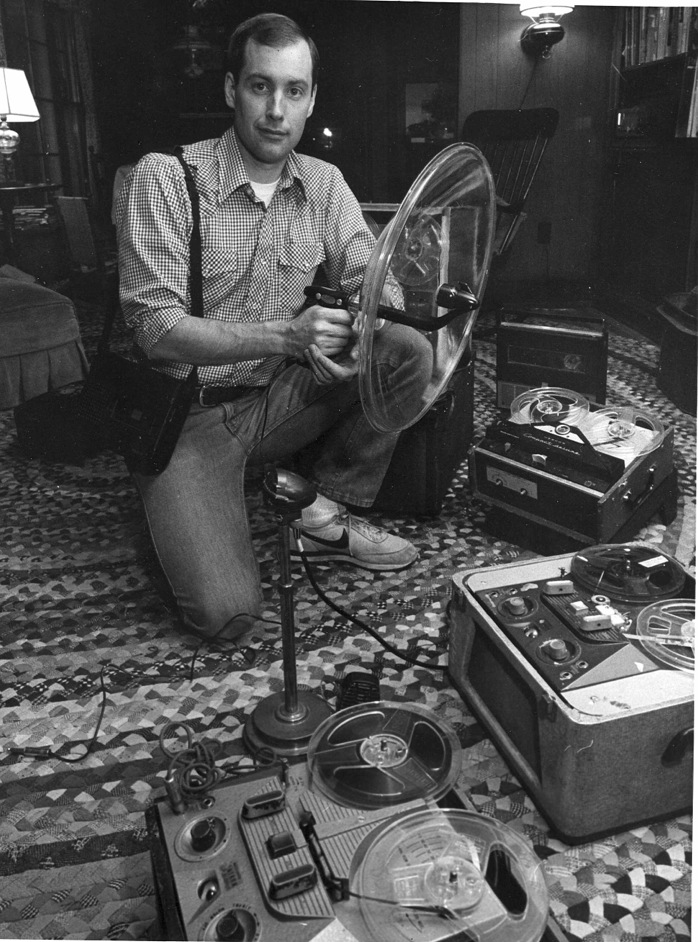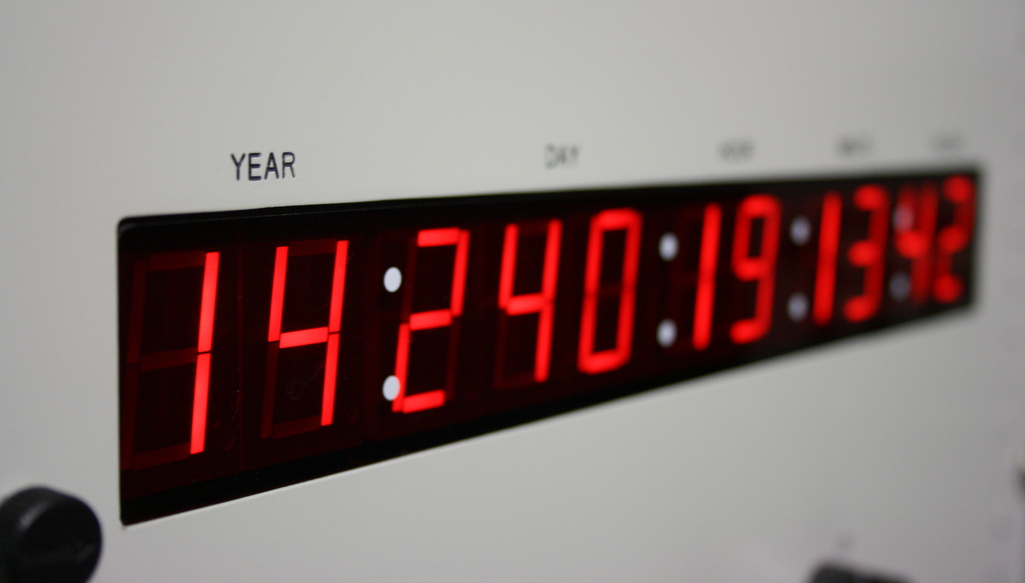
A WWV Time Code Generator
Many thanks to SWLing Post contributor, Jock Elliott, who shares the following guest post:
It’s about time . . . and beacons
By Jock Elliott, KB2GOM
Shortwave time stations can be incredibly useful for shortwave listeners, not just for checking the time, but also for finding out what’s going on with radio signal propagation. What makes these stations particularly valuable is that they are available all the time. I use them often when I am testing radio equipment or tweaks to my listening post.
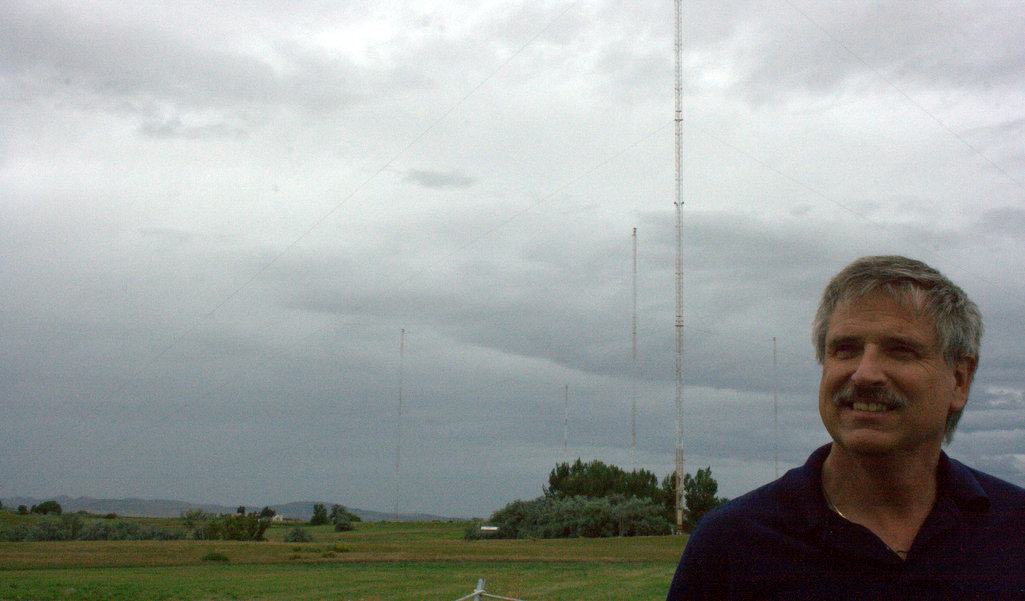
Chief Engineer Matt Deutch at WWV/WWVB. (Photo: Thomas)
The National Institute of Standards and Technology (part of the U.S. Department of Commerce) maintains a couple of stations devoted to broadcasting time announcements, standard time intervals, standard frequencies, UT1 time corrections, a BCD time code, and geophysical alerts 24 hours a day, 7 days a week.
WWV in Fort Collins, Colorado, according to NIST:
“radiates 10 000 W on 5 MHz, 10 MHz, and 15 MHz; and 2500 W on 2.5 MHz and 20 MHz. Each frequency is broadcast from a separate transmitter. Although each frequency carries the same information, multiple frequencies are used because the quality of HF reception depends on many factors such as location, time of year, time of day, the frequency being used, and atmospheric and ionospheric propagation conditions. The variety of frequencies makes it likely that at least one frequency will be usable at all times.”
In addition, WWV broadcasts the same signal heard on the other WWV frequencies on 25 MHz on an experimental basis. The power is 2500 W and, as an experimental broadcast, is may be interrupted or suspended without notice.
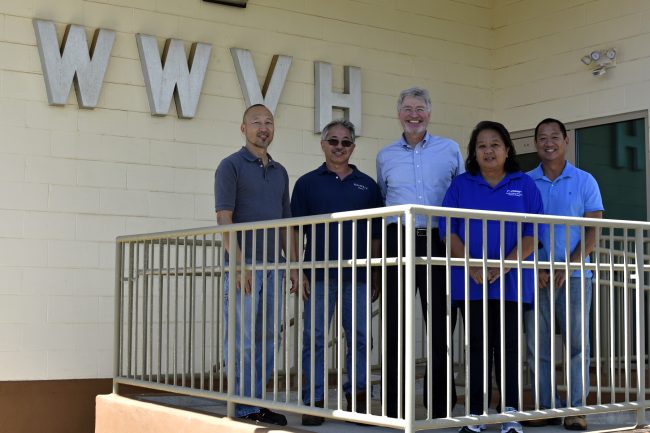
WWVH crew from left to right: Dean Takamatsu, Dean Okayama, Director Copan, Adela Mae Ochinang and Chris Fujita. Credit: D. Okayama/NIST
WWVH, based in Kekaha, Hawaii, transmits 10000 W on 10 MHz and 15 MHz, and 5000 W on 2.5 MHz. A NIST notes that the 5 MHz broadcast, which normally radiates 10 000 W, is currently operating at 5000 W due to equipment failure.
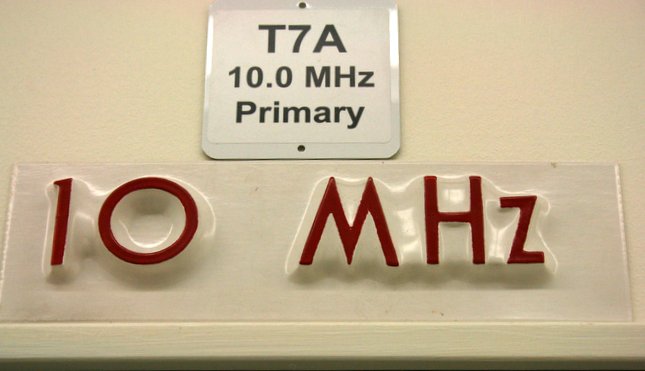
Photo Thomas (K4SWL) took in 2014 of the sign above WWV’s primary 10 MHz transmitter.
Both stations have voice announcements. WWV uses a male voice; WWVH, a female voice. They are staggered in time so that they don’t talk over each other. While doing research for this blog, one afternoon on 5 MHz and 10 MHz, I could hear the female voice, followed by the male voice, so I was hearing both Hawaii and Colorado. On 15 MHz, I could hear only Hawaii. Both stations transmit in AM mode, although I sometimes use upper sideband to pick the signals out of the noise.
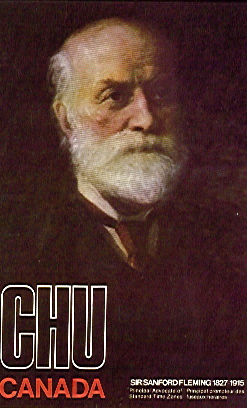
CHU’s QSL card used in the 1980s depicting Sir Sanford Fleming, father of uniform times zones.
In addition, there is a Canadian time station. CHU transmits 3000 W signals on 3.33 and 14.67 MHz, and a 5000 W signal on 7.85 MHz.
The frequencies were chosen to avoid interference from WWV and WWVH. The signal is AM mode, with the lower sideband suppressed.
The same information is carried on all three frequencies simultaneously including announcements every minute, alternating between English and French. The CHU transmitters are located near Barrhaven, Ontario.
According to a posting on Radio Reference, there is also a time beacon in Moscow, Russia that transmits on 9996 and 14996 kHz in CW mode. I have never heard that station.
If anyone knows of additional shortwave time stations, please post the information in the comments section below.
Beacons
Another “standard reference” that can be used to figure out what’s happening with shortwave propagation is the International Beacons Project, a worldwide network of radio propagation beacons. It consists of 18 Morse code (CW) beacons operating on five designated frequencies in the high frequency band. The project is coordinated by the Northern California DX Foundation (NCDXF) and the International Amateur Radio Union (IARU).
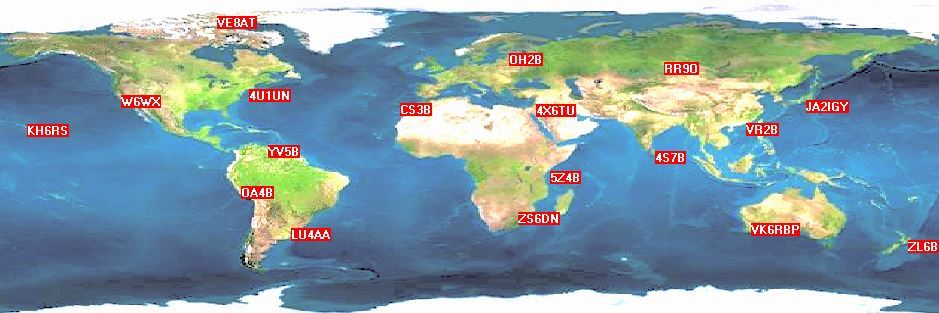
This page shows the locations of the beacons and gives samples of the signals that can be heard. Each beacon transmits once on each band once every three minutes, 24 hours a day. A transmission consists of the callsign of the beacon sent at 22 words per minute followed by four one-second dashes. The callsign and the first dash are sent at 100 watts. The remaining dashes are sent at 10 watts, 1 watt and 100 milliwatts. At the end of each 10 second transmission, the beacon steps to the next higher band and the next beacon in the sequence begins transmitting.
Clicking around the International Beacons Project website will reveal a wealth of information, including a Reverse Beacon Network — https://www.ncdxf.org/beacon/RBN.html — no kidding.
Finally, if you would like to disappear down the rabbit hole of chasing shortwave beacons, here is a list of 411 beacons around the world: http://www.dl8wx.de/BAKE_KW.HTM
The listing includes the frequency, the location, and the power of the transmitter (among other things). If any reader has experience with these beacons, please post in the comments section.
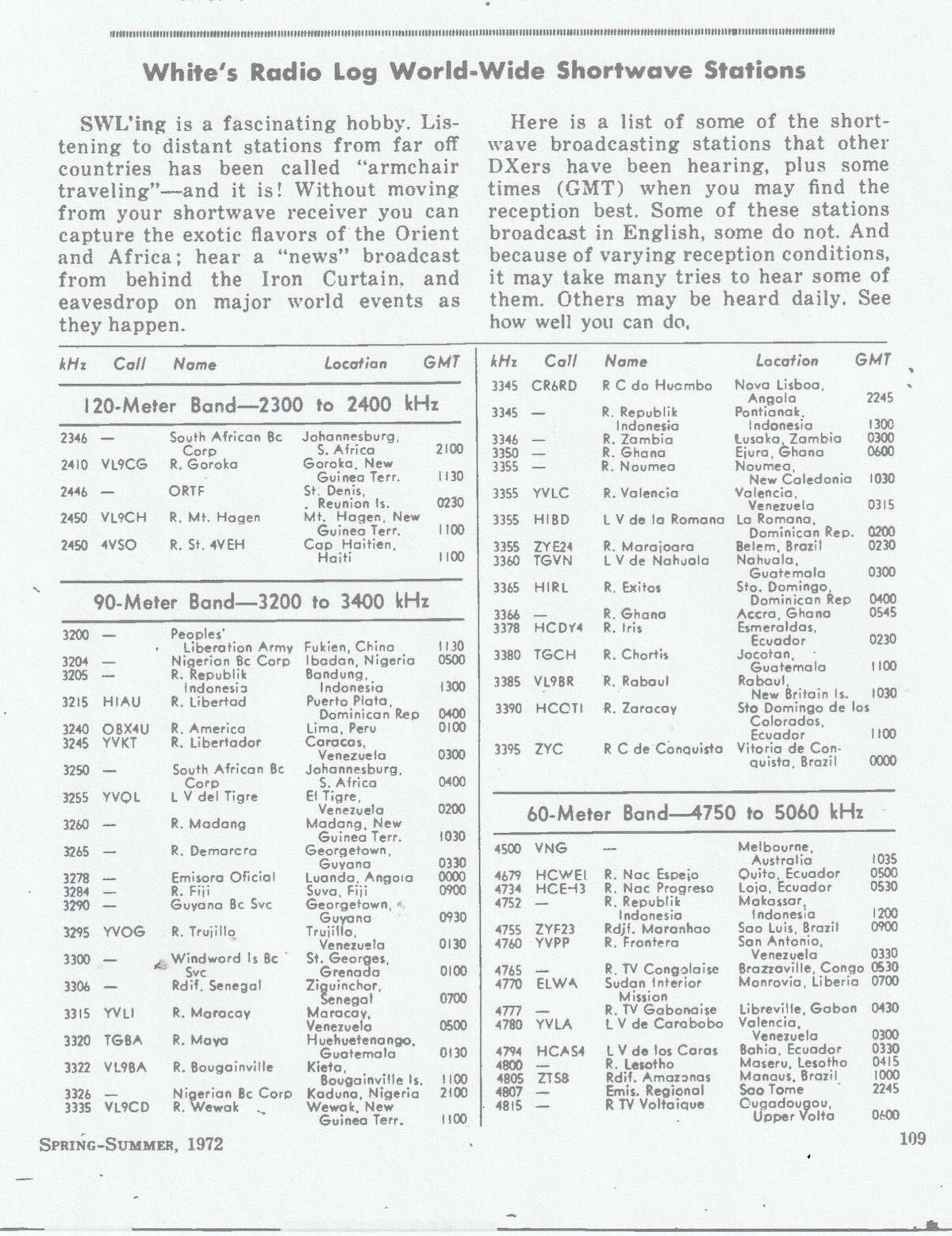 Here are a few links to recordings from my personal collection that have survived through the many years. These were all made between 3200 and 3400 kHz from my listening post in southern Ontario, Canada.
Here are a few links to recordings from my personal collection that have survived through the many years. These were all made between 3200 and 3400 kHz from my listening post in southern Ontario, Canada.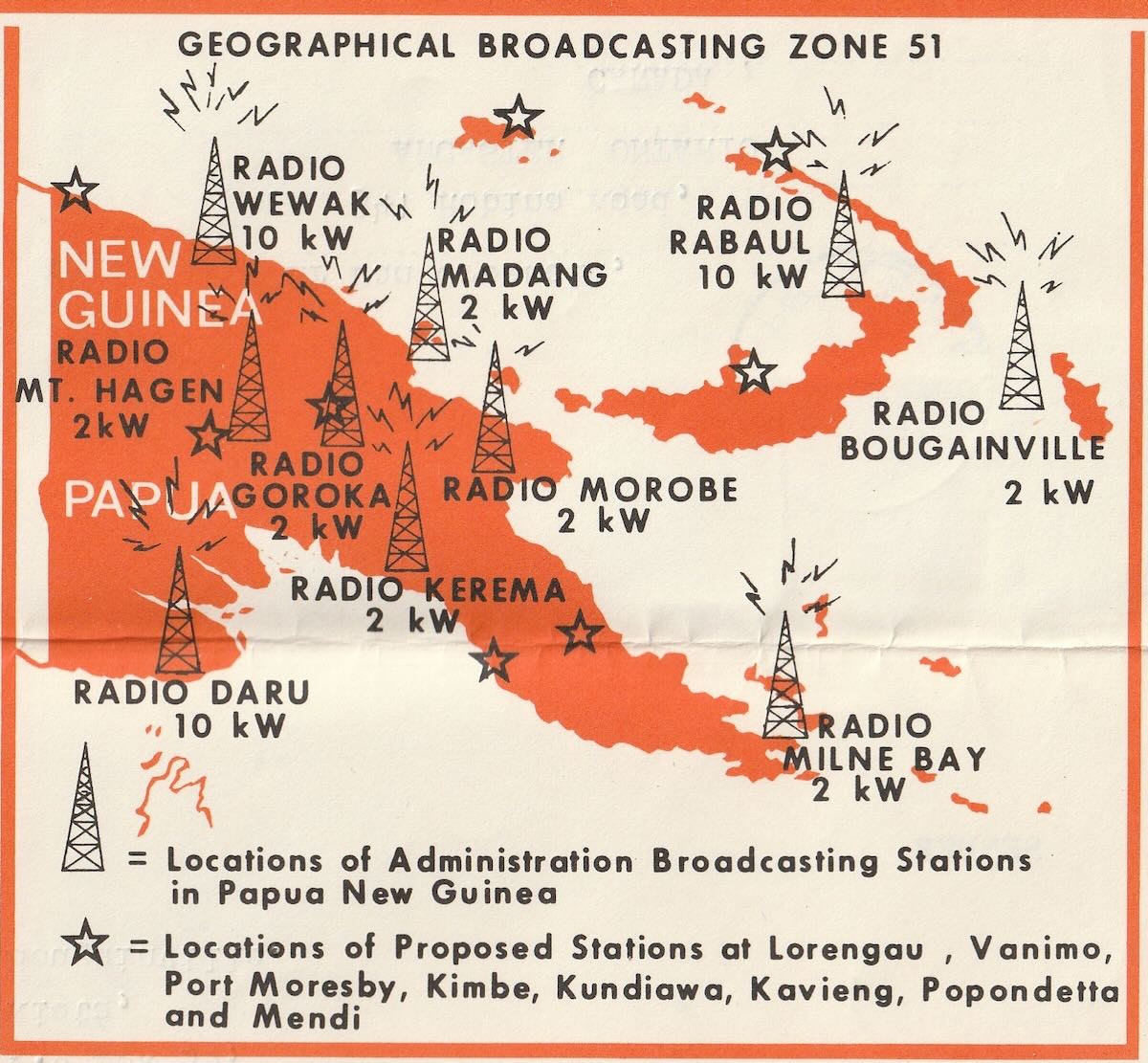 Radio Rabaul, PNG 1971
Radio Rabaul, PNG 1971 Radio Libertad, Santiago, Dominican Republic 1971
Radio Libertad, Santiago, Dominican Republic 1971
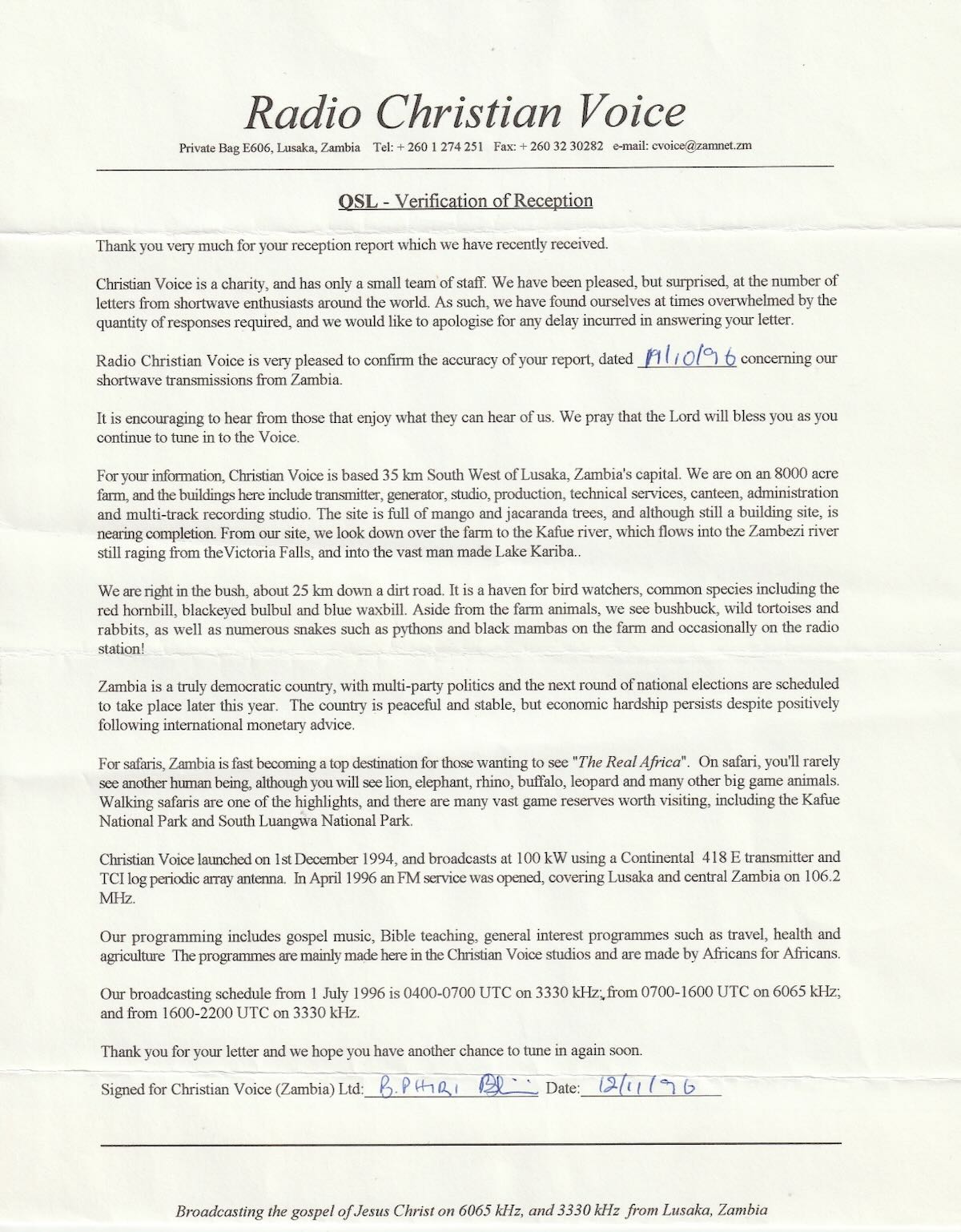
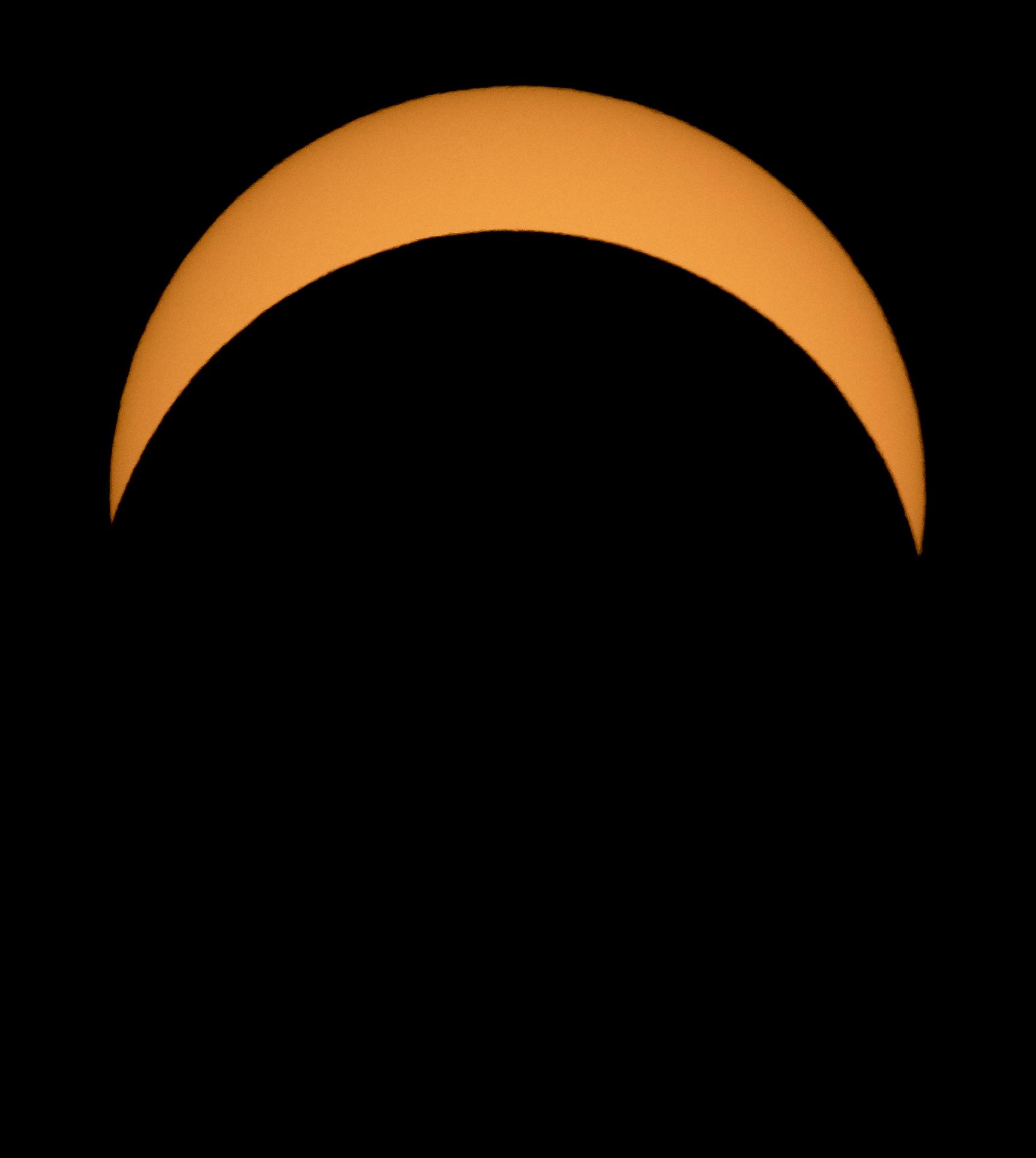
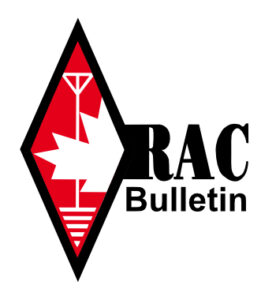







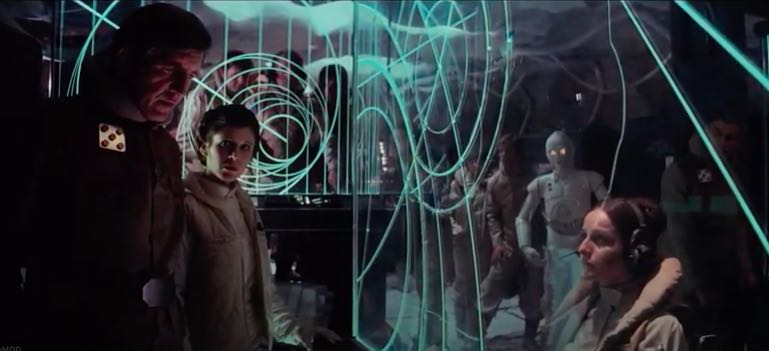
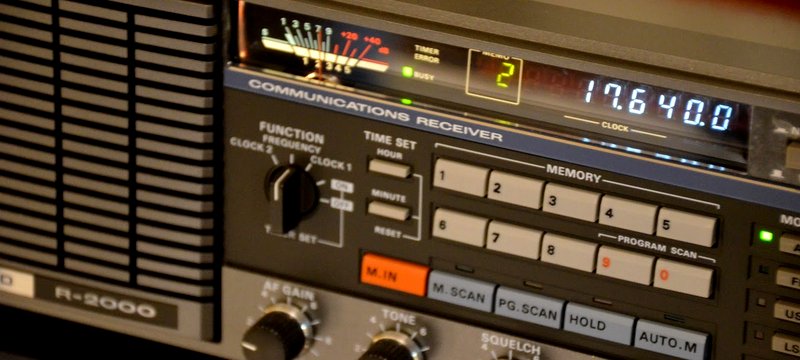

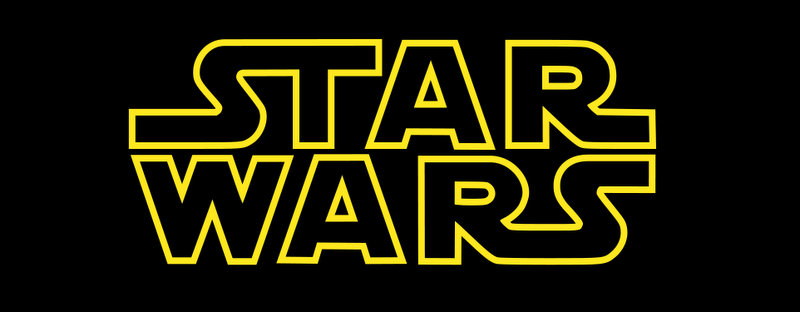 SWLing Post readers may remember
SWLing Post readers may remember 